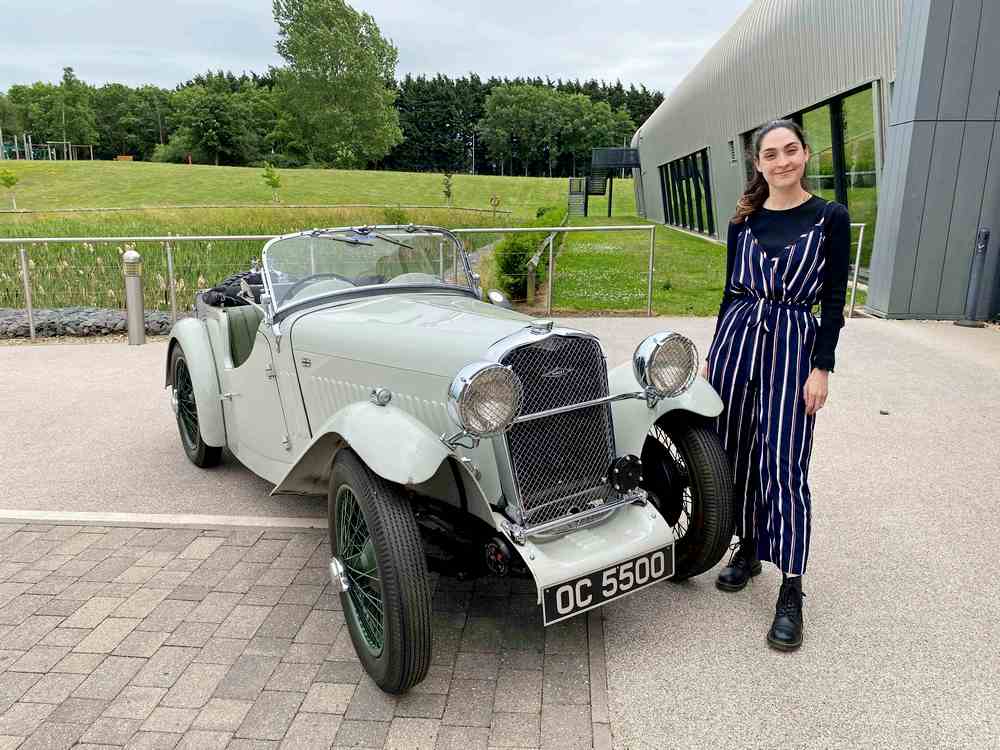I am on the mailing list of the Jensen Museum and in early 2019 I received an article featuring the Jensen GT. This model was a sports hatch version of the Jensen – Healey. The article describes why and how it was conceived, in particular, why the Healey name was dropped and the repercussions of that decision. As I was reading the article I thought to myself, “This might be of interest to a wider audience of Healey enthusiasts because of its insight into Donald Healey’s relationship with Jensen.” This article, an abridged version of the Jensen Museum original, was first published in the April 2019 edition of the Healey Marque magazine, the organ of the Austin Healey Club of America, with the blessing of Ulric Woodhams, owner and curator of the Jensen Museum. The full article is available on the Jensen Museum’s website, see the link at the end of this piece.
A little background on the Jensen Museum – originally it was dedicated only to the Jensen FF model, Ulric owned several of these cars, all of them with interesting histories. About four years ago now, Ulric decided that there was a need to bring his skills and enthusiasm (my description, not his) to bear on the whole of the Jensen range. I am in awe of the excellent job he has made of the website in particular. Already it is a treasure trove of detailed information on every aspect of Jensen’s existence, especially the roles played by a varied range of personnel. In my opinion, this website could be the definitive template for all historic marques (by that I mean marques that are held in high regard but are no longer manufactured, like Healey, for instance). The Museum itself is located in a very scenic part of the world, Church Stretton, Shropshire. It does not lend itself to “passing visitors,” and an appointment is preferable but it is a visit that is well rewarded when made – even more so if you stay in the area for a few days.
The Jensen GT, Jensen’s Last Hope
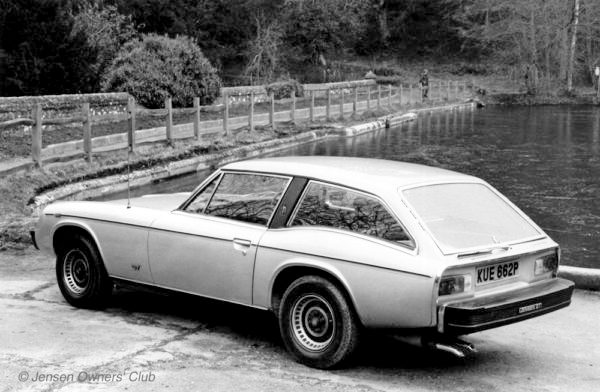
The Jensen GT was the last-ditch attempt by Kjell Qvale (a California-based car importer who bought Jensen Motors Ltd. in 1970 with the idea of building a replacement for the Austin Healey 3000) to keep Jensen Motors in operation. The idea of a shooting brake Jensen Healey, with close to “Interceptor levels” of refinement had merit, but it wasn’t going to save the company. Incredibly, just over 500 Jensen GT cars left the factory between September 1975 and the factory’s closure in May 1976. Sketches for a shooting brake Jensen Healey had been made back in 1972, and the idea was followed through in 1973. Agreement for the GT to go into production (without the Healey name attached) was given by Qvale in January 1974. The fact was, with the petrol crisis and falling Interceptor sales, a new, more economical car was needed. Qvale had yet to pull the plugs on the ‘F’ Type and ‘G’ Type projects (proposed new Jensen-badged cars to replace the Interceptor) but meanwhile was giving his attention to this up-market shooting brake version of the Jensen Healey.
Tony Marshall, Sales Manager at Jensen Motors at the time, remembers the early discussions for the shooting brake Healey; in particular, a confidential chat with Marketing Director Richard Graves, in connection with the naming of the new car. “According to Richard, the majority of the board had decided they didn’t want the Healey name attached to the car. The new car was going up-market from where the Jensen Healey was positioned, and as such, they felt the Healey name wasn’t relevant. Apparently, Donald Healey put up a fight, stating this was a derivative of the Jensen Healey and as such should bear his name but this was countered with the fact that the body had been radically changed in appearance, as had the interior. As one can imagine, Healey was upset about this and it may have been one of the reasons for him resigning as Chairman of Jensen Motors.” It was during these initial discussions about the new shooting brake car that Qvale asked Jensen’s marketing and PR advisor, Tony Good, about the positioning of the car. “When Kjell initially discussed the Jensen GT with me, I had reservations about how Jensen Motors was going to position the car. I was certainly against the car being positioned either as a ‘baby’ Interceptor, or indeed, as an Interceptor replacement (although it had been made clear to me, the GT was not going to be an Interceptor replacement). And that was the problem, where was the Jensen GT going to fit into Jensen’s marketing plans? It is also worth mentioning that neither the ‘F’ Type nor indeed the ‘G’ Type (future Jensen models that were being planned prior to the closure of Jensen. CSI ed. – see reference at the end of the article), was completely shelved at this stage. So, theoretically, there could have been a range of cars to position, correctly, for marketing. The GT was undoubtedly different to the Jensen Healey, which had the Healey name attached to it, a name of some importance and beneficial to the Jensen brand.
Good continues, “On the other hand, the GT would not have the Healey name behind it, and even worse, Qvale was thinking of fitting Interceptor badges to the car. I was against that type of connection with the Interceptor. I mentioned my reservations, but in the end it was Qvale’s money paying for it, and he was going to go in the direction he wanted. To be fair, by 1975 when the Jensen GT finally went into production, the whole issue was becoming irrelevant anyway.” Good’s reflections on the positioning of various ongoing projects and the GT, in particular, are interesting. Under Qvale’s direction, Jensen Motors was changing tactics. They had one medium-priced sports car, the Jensen Healey, and the expensive Interceptor range. This range of cars was destined to increase, with the yet to be named ‘F’ Type and ‘G’ Type along with the GT. Peter Browning and John Blunsden make mention of this situation in their book, ‘The Jensen Healey Stories’: “Jensen have been able to choose their distributors and dealers with more than the usual amount of care, for unlike the car giants looking for market saturation it has not been essential to be represented in every centre of population. In particular, the company has made it a policy to offer franchises to those motor traders who are not only prepared to maintain the appropriate facilities and trading standards but who also stand to benefit most by and prosper through Jensen’s announced intention to steadily expand their product line to embrace a wider crosssection of the total market than ever before.”
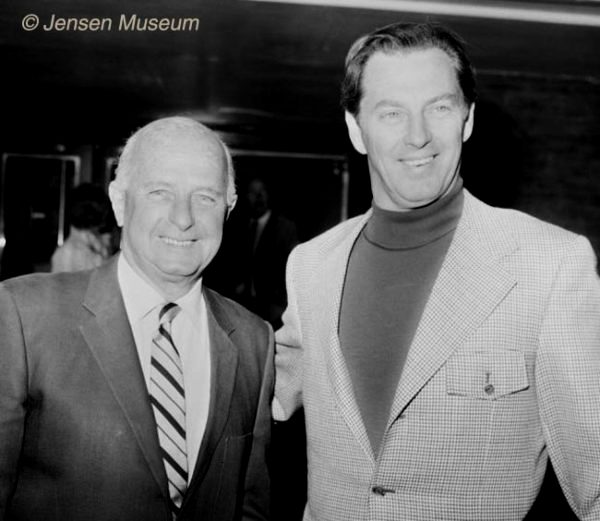
The idea was to use the Jensen Healey platform but to build the car up as a sporty fixed-head estate car, or “shooting brake” in now-obsolete British parlance. The new car, designated as the Jensen GT, would host many refinements not available in the humble Jensen Healey, such as a full burr walnut fascia and electric windows. There were even leather trim and airconditioning options. To add the hand-made feeling to buyers, a small stainless steel plaque was mounted to the inside of the dashboard pull down locker lid, stating, “Coachwork by Jensen Motors.” It was hoped that this smaller-engined vehicle, with close-to interceptor levels of interior refinements and realistic petrol consumption, might, together, be a miracle combination that could save Jensen Motors. The Development Department was given the job of building the new prototype Jensen GT cars.
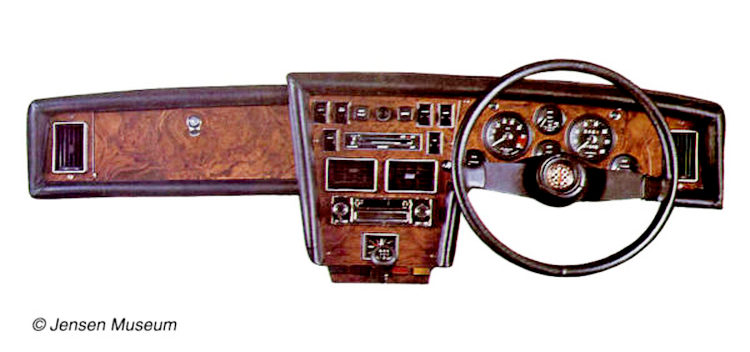
Jensen GT Development
Andy Hunter, one of the Development Department mechanics, remembers the initial GT development vehicle –
“ a Healey shell came off the line, and was brought into Development. Our metal guys scratch built the GT roof, based on the working drawings. Afterwards, the vehicle went over to the paint shop and was sprayed a dark blue colour.
Once back at Development, the vehicle was built up as a finished GT. Not long after work was ongoing to the next two prototype GTs, this dark blue car was scrapped.”
With the overall look of the initial GT accepted and signed off, two further Jensen Healey shells were taken off track. These were given over to the Development Department to be built as GTs. The two cars were built up during 1974, one as a left-hand-drive GT (J-H chassis 13910), and the other as a right-hand-drive GT (J-H chassis 19850). Much of the brightwork on the two prototypes was chromed brass, but for the production cars, most of the brightwork would be changed to stainless steel. Hunter recalls, “Initially both cars were finished with the standard Jensen Healey dashboard”. In fact, some of the original publicity photographs taken of chassis 19850, by Michael Cooper, show the Healey dashboard still in place. When chassis 19850 had the full burr walnut dashboard fitted, yet another photoshoot had to be arranged.” The LHD GT was finished and registered in December 1974 with the registration number GNX 579N, and the RHD GT was finished and registered on the 14th February 1975 with the number GNX 581N.
Surprisingly, the DVLA files show that Jensen Motors called the new car a Jensen Healey GT at that stage, although, as the car was set for production, the Healey connection was removed. Bearing in mind Donald Healey had resigned as Chairman back in 1973 (to some degree over the removal of his name from the new car) one can only believe it was an oversight by the individual registering the cars. Not long after completion, the two prototype cars were fitted with Vauxhall 2279cc engines, and according to Alan Vincent, Technical Director at Jensen Motors, with good reason. “Apparently Lotus had been playing up in regard to the on-going supply of engines. In short, they were trying to up the unit price. Development was asked to trial the Vauxhall engine in the two prototype GT cars, which we did. Actually it worked quite well and allowed Jensen Motors to use this fact when negotiating with Lotus. Lotus backed down and continued to supply units at a similar cost as previously negotiated. We left the Vauxhall engines in the GTs for a while, then pulled them out and reverted the two prototype cars to the Lotus units.”
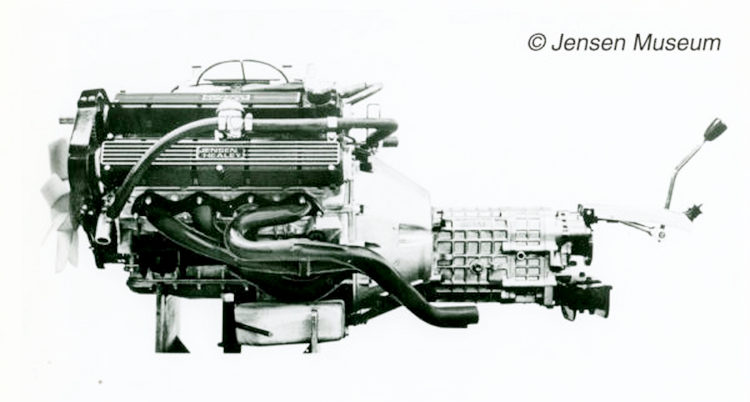
Andy Hunter gives us a further insight into the two prototype cars. “The two prototype GTs [13910 and 19850] were initially fitted with the usual Lotus engine. In fact one of the first jobs I did to GNX 581N [chassis 19850] was to trial air-conditioning. We found a really compact Japanese compressor, which we managed to fit very neatly to the Lotus engine, and this worked very efficiently. Not long after we were asked to trial the Vauxhall engine, so removed the Lotus engines and fitted Vauxhalls. The airconditioning compressor didn’t easily fit to the Vauxhall engine, so we took the A/C system off GNX 581N, and never refitted it when we re-installed the Lotus engine. “I didn’t like the Vauxhall engine. It never revved properly, there were oil pressure issues, and due to the block being cast iron, there were adverse weight issues. In any case, the Vauxhall engines didn’t remain in the cars for very long before being pulled out again, and the cars being re-united with their Lotus engines.” It was Alan Vincent who also came up with what is now affectionately called by enthusiasts of the GT, the “moustache,” a stainless steel strip towards the front of the bonnet with a section of black Everflex material. Vincent recalls the so-called moustache: “
As GT 19850 neared completion, I noticed that we had this large black bumper line and light blue bonnet. I didn’t like the way the light blue and black cut a straight line along the front. I played around with various ideas and eventually came up with a stainless steel strip, which sat about 2” up from the front bonnet edge. The two ends of the strip were bent downwards, and then the area of painted bonnet in between had a section of black Everflex glued in place. I wanted to break up that hard line, and thought this looked a bit like an air-intake. Qvale came and had a look. He liked the idea, and so, with his approval, that is how the ‘moustache’ entered into production. At the same time, Qvale initiated another small change.” Vincent continues, “The GTs were to have a standard red enamelled Interceptor badge fitted to the bonnet, but on the Reef Blue-painted RHD prototype [19850] he wanted a blue enamelled Jensen badge fitted instead. It was the only GT to have a blue enamelled badge. All production GTs had red ones. “Back to the so-called ‘moustache. I must say I was blissfully unaware that this was done away with after the first fifty cars. I guess Qvale later had misgivings about that bit of design.”
As soon as GT chassis 19850 was finished and registered as GNX 581N, it was driven locally for a photo session. Michael Cooper was used once again, taking a large variety of images of the car. A selection was used for the initial publicity brochure for the Jensen GT. Against Tony Good’s better judgment, Qvale had gone with enamel Interceptor badging for the bonnet and even fitted a chromed Interceptor “Jensen” badge to the rear (just below the tailgate). Additionally, there were enamel Interceptor “J” shield badges positioned either side to the rear panel pillars. However, there was also unique “GT” badging. The wheel centres had a “J” on a black and white F1 motorsport-inspired chequerboard and the same design was used as a centre horn push to the steering wheel. It was an inspired design by Qvale, which set the right flavour for this car. There were also “GT” badges fitted either side of the front wings. As with Vincent’s “moustache”, Qvale later decided to remove the chromed Interceptor type “Jensen” from the rear. The badge was deleted from production car 30051 onwards, as was the “moustache.”
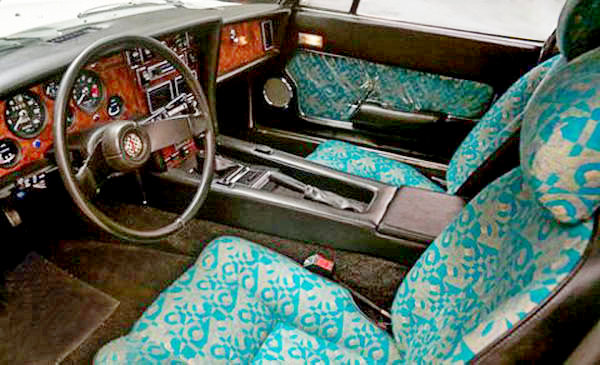
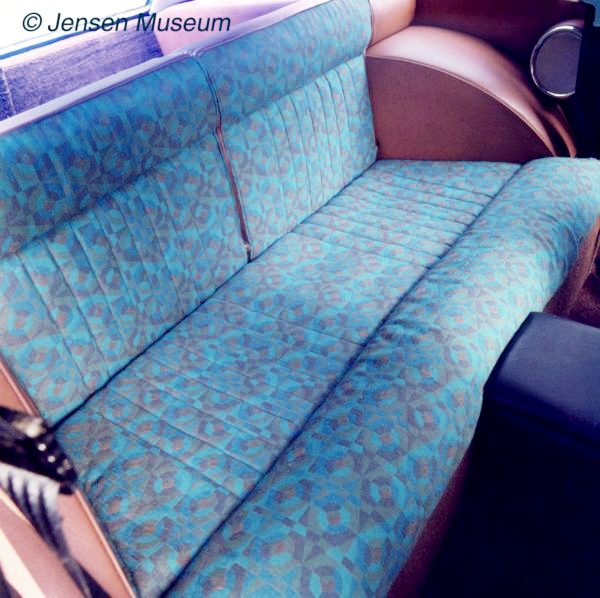
Jensen GT Moves To Production
With prototypes assessed and agreed, work started to get them into production. Jensen GT chassis numbers started from 30002, and it is believed the 2 represented the two prototypes that had already been built up. The chassis numbers then followed through to 30510. An internal Jensen Motors document dated 5 August 1975 gives a breakdown of costs for the Jensen GT and Jensen Interceptor. The total variable cost for the GT was £2,454, and £4,150 for the Interceptor. The same document states that the total cost of tooling and jig work for the GT development was £120,000. There would be some further cost to get the GT through the new safety and pollution regulations in force in the USA. The 30 MPH crash impact to the front took place in July 1975 and in September the 4,000 miles emissions test, along with Federal braking tests, took place.
These were passed without difficulty. With all the relevant testing completed and the paperwork in place, the GT was ready to be sold into the USA. Qvale had high hopes for the new GT in that market. On release, the Jensen GT sales price was around £4,500 ( c.$9212), so even with the dealers’ margin to be taken into consideration, a realistic profit margin had been set in place. It is easily forgotten today what the cost of a Jensen GT, at a launch price of £4,563 (including taxes), was comparable with at the time. The average annual salary of someone working in London was about £4,000, and the average cost of a standard new family car was just under £2,000. Therefore the Jensen GT was way outside the pocket of the average buyer. That said, the person with the odd £4,500 in their pocket to buy a car with, could have bought a Datsun 260Z 2 + 2 at £4,598, a Reliant Scimitar GTE at £4,368, or an Italian offering of the Alfa Romeo Alfetta GT at £4,198. It was summer before production of the Jensen GT started, and at that time the Jensen GT was also launched publicly.
The first completed cars were coming off the line in September, just as the receiver was brought in. By the beginning of autumn 1975, production of the GT was underway. This coincided with stopping production of the Jensen Healey. By the end of September just under 20 GTs had been completed, and in the following months production ran at around 50 GTs a month. This makes it sound as though Jensen GT production was running straightforwardly, and without interruption. However, this was far from the truth. When one looks at the situation Jensen Motors was in, it is hard to imagine they could build over 500 GTs between September 1975 and May 1976. In fact, the receiver came in just as production of the GT started and finances were kept on a tight rein.
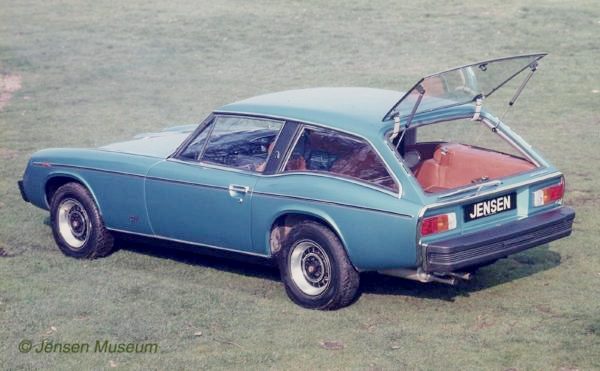
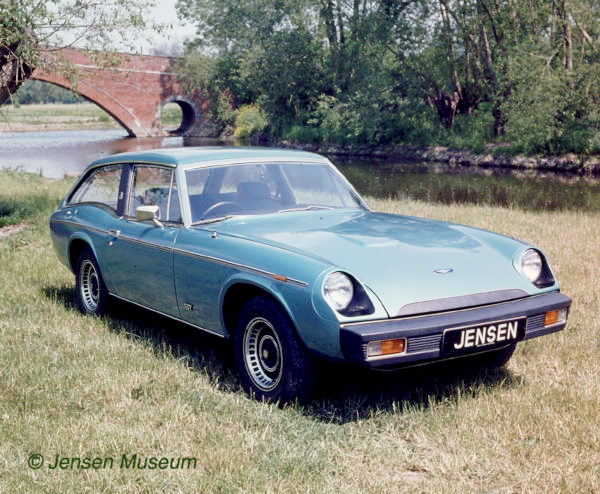
Clive Kendrick, a former assembly line worker at Jensen Motors, remembers Jensen GT production at Jensen Motors like this: “The GTs were being built over in the former Jensen Healey bay. I was working on Interceptor assembly, but occasionally I was pulled off the Interceptor line to help on the GTs. Typically I’d be doing something like fitting the rear quarter glasses. Over where the GTs were being built up, you would always find a batch of ‘dead’ cars that had been pulled off the line and deposited in a corner somewhere. The problem was that suppliers were getting jittery and were demanding payment “up front” for stock. Then on top of that the receiver checked every penny that was going out, making sure that not too much stock was bought in at any one time and also, that it was stock that was needed. So, you might find that we were running out of something like the walnut veneers for the fascia. So, after the last ones had been fitted, there could be a delay before another batch arrived. Meanwhile, cars were nearing completion, but with no fascias fitted. We would be told to get those cars as complete as possible, then they were pulled off the line and put in a corner. When some more stock arrived, the Progress Chaser would, as often as not, get us to continue to build up existing cars on the line, rather than finish the cars pulled off the line. That led to long delays before those cars were eventually finished, and it even led to the inevitable cannibalising of bits from those cars, to finish off cars on the line.”
Jensen Motors had their stand booked for the 1975 Earls Court Motor Show, and even with the receiver holding the purse strings, the Company were going all out, with no less than four cars being showcased. There was a Jensen Interceptor, a Jensen Convertible, and the two new cars, the Jensen Coupe, and the Jensen GT. Between 25 and 30 November 1975, the Jensen GT was unveiled to the American public at the San Francisco Auto Show. In preparation for the show, Qvale’s sales staff were prepped on how to market the GT: “The Jensen GT can best be described as a 2+2 that combines the elegance of Jensen’s Interceptor with the performance and handling of the Jensen Healey.” They were told to call the Jensen GT “The Econo Jensen” – a car that has grand luxury on a small scale, with sports car performance and handling.
As with the London Motor Show, the Jensen GT was well received at the San Francisco Auto Show. The Los Angeles, CA. based publication, Road Test, report was more like a “love letter” to Jensen’s new car: “This is a real handbuilt car. It is not for women or perishing dilettantes. This is a man’s car, handcrafted in the old English tradition, making excuses to no one, and all the bureaucrats and libbers be damned. Like the crack of a baseball as it leaves the sweet spot on a bat to begin its trip over the centerfield fence, there seems to be something almost indefinably correct about the Jensen GT: something right on target for that particular type of man who knows what he likes but has a hard time finding it. This is a car for a man but not for an MCP [Haven’t heard that one in a while: MCP, Male Chauvinist Pig. –Ed.]; unlike a lot of other “GT” cars, the person who buys this will likely have few hang-ups about his own ego. He will have little need to prove anything to anybody. He will simply buy it because he likes it. It seems to strike the perfect blend. It is as traditional as it can be and still be modern, and as modern as it can be and still be traditional. They probably won’t build or sell many, but whoever does buy it will be confident he made the right choice.”
The Jensen GT continued to be made right up until the last day of operations at the factory, Friday, 21 May 1976, when eight were signed off. One uncompleted shell, included among the goods auctioned off in the receiver’s sale in August 1976, was finished in 1987!
Jensen F and G Types
These models were being planned for before Jensen Motors Ltd. went into administration and are referred to in a previous CSI article –
ACKNOWLEDGEMENTS: Anthony Branson; Richard Calver, Jensen Historian; Tony Good OBE, former Chairman of Good Relations; Andy Hunter, former Development Department mechanic, Jensen Motors; Clive Kendrick, former assembly worker, Jensen Motors; Jason and Paul Lawrence, marque specialists, Rejen Ltd.; Alan Vincent, former Technical Director, Development Department, Jensen Motors; Tony Marshall, former Sales Manager, Jensen Motors. Copyrights: Jensen Museum and Jensen Owners’ Club. Jensen Museum www.jensenmuseum.org
Nick
© carsceneinternational.com
Member of the Specialist Vehicle Trade Association






